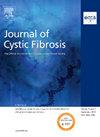The fungal diversity in the lungs of children with cystic fibrosis captured by sputum-induction and bronchoalveolar lavage
IF 5.4
2区 医学
Q1 RESPIRATORY SYSTEM
引用次数: 0
Abstract
Background
The prevalence of fungi in cystic fibrosis (CF) lung infections is poorly understood and studies have focused on adult patients. We investigated the fungal diversity in children with CF using bronchoalveolar lavage (BAL) and induced sputum (IS) samples to capture multiple lung niches.
Methods
Sequencing of the fungal ITS2 region and molecular mycobiota diversity analysis was performed on 25 matched sets of BAL-IS samples from 23 children collected as part of the CF-SpIT study (UKCRN14615; ISRCTNR12473810).
Results
Aspergillus and Candida were detected in all samples and were the most abundant and prevalent genera, followed by Dipodascus, Lecanicillium and Simplicillium. The presumptive CF pathogens Exophiala, Lomentospora and Scedosporium were identified at variable abundances in 100 %, 64 %, and 24 % of sample sets, respectively. Fungal pathogens observed at high relative abundance (≥40 %) were not accurately diagnosed by routine culture microbiology in over 50 % of the cohort. The fungal communities captured by BAL and IS samples were similar in diversity and composition, with exception to C. albicans being significantly increased in IS samples. The respiratory mycobiota varied greatly between individuals, with only 13 of 25 sample sets containing a dominant fungal taxon. In 11/25 BAL sample sets, airway compartmentalisation was observed with diverse mycobiota detected from different lobes of the lung.
Conclusions
The paediatric mycobiota is diverse, complex and inadequately diagnosed by conventional microbiology. Overlapping fungal communities were identified in BAL and IS samples, showing that IS can capture fungal genera associated with the lower airway. Compartmentalisation of the lower airway presents difficulties for consistent mycobiota sampling.
通过吸痰和支气管肺泡灌洗捕捉囊性纤维化患儿肺部的真菌多样性。
背景:人们对囊性纤维化(CF)肺部感染中真菌的流行情况知之甚少,研究主要集中在成年患者身上。我们使用支气管肺泡灌洗液(BAL)和诱导痰(IS)样本来捕捉多个肺部壁龛,调查了CF患儿的真菌多样性:对作为 CF-SpIT 研究(UKCRN14615;ISRCTNR12473810)一部分收集的 23 名儿童的 25 组匹配 BAL-IS 样本进行了真菌 ITS2 区测序和分子菌群多样性分析:结果:在所有样本中都检测到了曲霉和念珠菌,它们是数量最多和最常见的菌属,其次是双孢蘑菇属、莱卡尼西菌属和单孢蘑菇属。在 100%、64% 和 24% 的样本组中,分别发现了不同数量的假定 CF 病原体 Exophiala、Lomentospora 和 Scedosporium。在 50% 以上的样本组中,常规微生物培养无法准确诊断出相对丰度较高(≥40%)的真菌病原体。BAL 和 IS 样本采集到的真菌群落在多样性和组成上相似,但白僵菌在 IS 样本中明显增多。不同个体的呼吸道真菌生物群差异很大,25 个样本组中只有 13 个样本组含有优势真菌类群。在 11/25 份 BAL 样本中,观察到气道分区,从肺的不同叶检测到不同的真菌生物群:结论:儿科真菌生物群多样、复杂,传统微生物学诊断不足。在 BAL 和 IS 样本中发现了重叠的真菌群落,这表明 IS 可以捕捉到与下气道相关的真菌属。下呼吸道的分隔给持续的真菌生物群采样带来了困难。
本文章由计算机程序翻译,如有差异,请以英文原文为准。
求助全文
约1分钟内获得全文
求助全文
来源期刊

Journal of Cystic Fibrosis
医学-呼吸系统
CiteScore
10.10
自引率
13.50%
发文量
1361
审稿时长
50 days
期刊介绍:
The Journal of Cystic Fibrosis is the official journal of the European Cystic Fibrosis Society. The journal is devoted to promoting the research and treatment of cystic fibrosis. To this end the journal publishes original scientific articles, editorials, case reports, short communications and other information relevant to cystic fibrosis. The journal also publishes news and articles concerning the activities and policies of the ECFS as well as those of other societies related the ECFS.
 求助内容:
求助内容: 应助结果提醒方式:
应助结果提醒方式:


